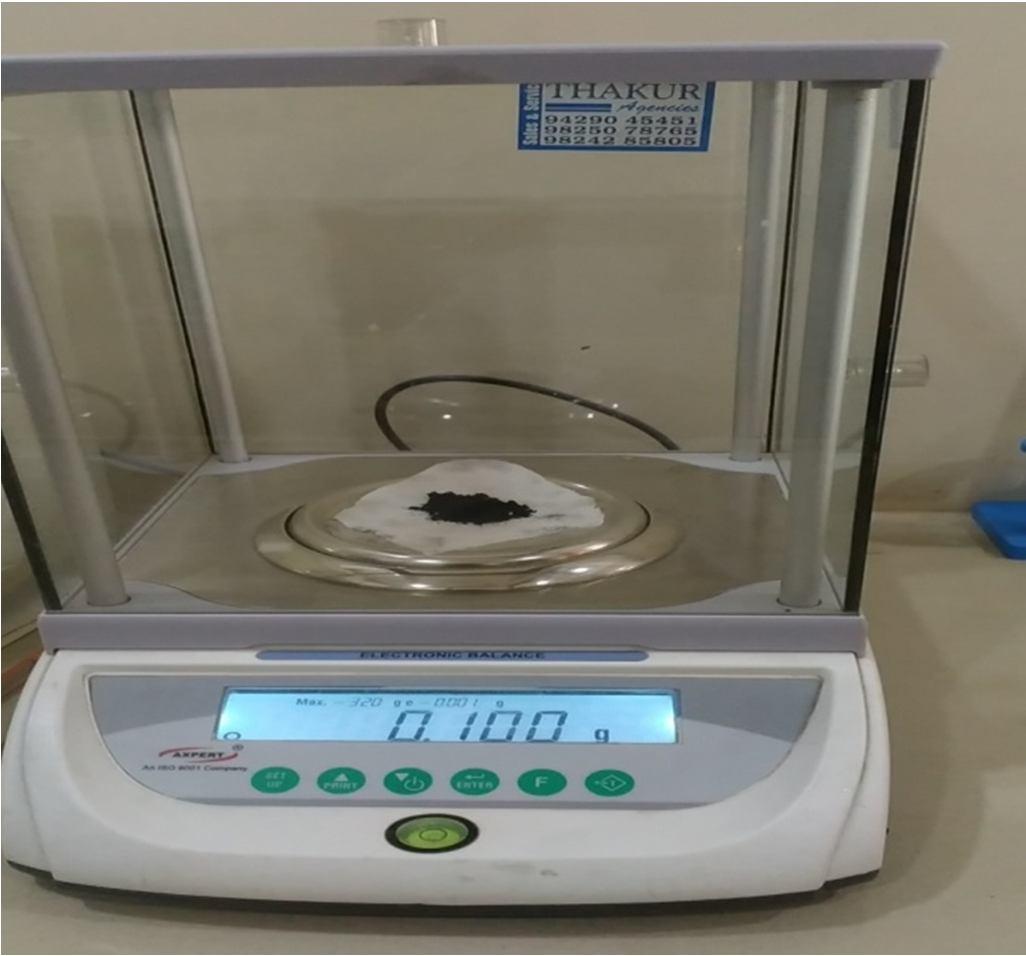https://doi.org/10.22214/ijraset.2023.50259

ISSN: 2321-9653; IC Value: 45.98; SJ Impact Factor: 7.538

Volume 11 Issue IV Apr 2023- Available at www.ijraset.com

https://doi.org/10.22214/ijraset.2023.50259

ISSN: 2321-9653; IC Value: 45.98; SJ Impact Factor: 7.538

Volume 11 Issue IV Apr 2023- Available at www.ijraset.com

Abstract: This paper investigates the performance and emission characteristics of single cylinder diesel engine under various concentration of Multiwalled Carbon Nanotube (MWCNT) in blends B20 and B30 biodiesel were investigated to establish the effect of MWCNT as nano-additive on the blends biodiesel used in diesel engine and aims to reduce the emissions of hydrocarbon and carbon monoxide into the atmosphere.
Keywords: Multiwalled Carbon Nanotube, Diesel engine, Nano-additive
With our present known stores and the developing rate of utilization, it is expected that they are not going to keep going long. These limited assets of oil and very moved in specific locales of the world has offered ascend to continuous interruptions and vulnerabilities in its supply and also cost [6]
Due deficiency of diesel fuel and its expanding cost, a substitute wellspring of fuel for diesel is especially required. It has been found that vegetable oil hold exceptional guarantee in such manner since they can be delivered from the plants develop in rural areas [6]
It was found, the acceptable thermal efficiency of the engine were obtained with blends containing up to 50% volume of jaropha oil. From properties and engine test results it has been established that 40-50% of jatorpha can be relieved for diesel without any engine modification and preheating of the blends. [1] The CO emission was reduced by 73-94% by using B20 to B100 as compared to diesel. The smoke opacity was reduced by 20-80% by using B20 to B100 fuel as compared to diesel. The NOX emission was also found to be decreased with a usual reduction of 26% by using biodiesel and its blends with diesel as compared to diesel.[2] The brake thermal efficiency for biodiesel and its blends was found to be slightly higher than that of diesel fuel at tested load conditions and there was no difference between the biodiesel and its blended fuel efficiencies. For jatropha biodiesel and its blended fuels, the exhaust gas temperature increased with an increase in power and amount of biodiesel. But Diesel blends showed reasonable efficiency, lower smoke,CO2,CO,and HC, and slightly increase in NOX emission.[3]The increased exhaust gas temperature may heat the combustion chamber also thus accountable extra load on engine cooling and lubrication system.[4] The emission CO, HC and smoke were reduced with MWCNT blended HOME as compared to neat HOME. The addition of MWCNT to honge oil methyl ester results in an increase in NOX emission as compared to neat HOME but lower than pure diesel. The author has reported, ensuring higher dispersion of MWCNTs in biodiesel is still a subject to research.[5] A light vehicular motor (auto motor) releases 1 to 2 kg toxins amid a day and overwhelming autos releases 660 kg of CO amid a year. The carbon monoxide is very lethal and the introduction for couple of hours to grouping of 30 ppm can make weaknesses physiological capacities [6] With the addition of Graphene, MWCNT, and silver nanoparticles to Home was enhanced the combustion characteristics and catalytic activity of the fuel, and thereby reduces emissions and ignition delay during the combustion process.[7] It was concluded that CNT blended emulsion fuel has potential advantage of improving engine performance and reducing emissions. [8]

ISSN: 2321-9653; IC Value: 45.98; SJ Impact Factor: 7.538
Volume 11 Issue IV Apr 2023- Available at www.ijraset.com
For alumina blended test fuel, percentage reduction of NO emission by 9 %, Smoke opacity by 17 %, unburned hydrocarbon by 33 % and carbon monoxide by 20 % are observed along with percentage reduction of NO emission by 7 %, Smoke opacity by 20 %, unburned hydrocarbon by 28 % and carbon monoxide by 20 %for cerium oxide blended test fuel.[9]

In nanotechnology, sonication is most widely used technique for uniformly dispersing nanoparticles in base liquid. For preparing blends of diesel and biodiesel with Multiwalled Carbon Nanotube (MWCNT) Probe type ultrasonicator was used Table 3.1 lists the details of MWCNT provided by supplier.
Item
Specification
Average particle diameter 12-15 nm

Average length 0.5-5 µm
No. of shells 8-15
Surface area 231.85 m2/g
Purity More than 97%
Appearance Black powder
The harmonized mixing of jatropha methyl ester (JME) and diesel done with the help of Digital Magnetic Stirrer to form blend mix biodiesel at 700 RPM for 30 minutes
For dispersing Nano additives in prepared blends of diesel and jatropha biodiesel with MWCNT in different concentrations of MWCNT of 50 mg, 75 mg and 100 mg were accurately weighted with auto calibrated Electronics Digital weighing scale provided facility by the Physics Department laboratory of Saurashtra University, Rajkot.


ISSN: 2321-9653; IC Value: 45.98; SJ Impact Factor: 7.538




Volume 11 Issue IV Apr 2023- Available at www.ijraset.com
2) Formation of fuel blends with MWCNT


Multiwalled Carbon Nanotubes (MWCNT) are blended with mixture of diesel and jatropha biodiesel of two different proportions of jatropha biodiesel 20% by volume (B20) and 30% by volume (B30) in three different concentrations of 50 mg/lit, 75 mg/lit and 100 mg/lit

A. Experimental Setup for Performance Testing


ISSN: 2321-9653; IC Value: 45.98; SJ Impact Factor: 7.538
Volume 11 Issue IV Apr 2023- Available at www.ijraset.com
Performance and emission tests were carried out on constant speed single cylinder water cooled compression ignition engine. All experiments were performed at constant speed of 660 rpm by varying the Engine loads.

The AVL Di-gas 4000 light make five gas analyzer was used to measure various constitutes in the engine exhaust gases including HC, CO, NOX, and CO2. Table 4.1 details of exhaust gas analyzer.


ISSN: 2321-9653; IC Value: 45.98; SJ Impact Factor: 7.538

Volume 11 Issue IV Apr 2023- Available at www.ijraset.com
The following emission parameters were measured and compared for diesel, diesel-biodiesel blends and blends with dispersed MWCNT:
Carbon monoxide (CO)
Hydrocarbon (HC)

Fig.5.4 indicates the emission of Carbon Monoxide (CO) versus engine BP. The carbon monoxide emission from the engine is indirect indication of incomplete combustion of fuel caused by lack of combustion and poor mixing of air-fuel. At the full load condition, the percentage composition of CO increases with increase in engine Brake Power for all fuel. Due to inherently oxygen content present in biodiesel composition, the CO emission was marginally reduced with biodiesel blend fuel compare to conventional diesel for all loads. There was additional reduction in carbon monoxide (CO) emission with the nano additives (MWCNT) in blends of biodiesel B20 & B30. With increasing the concentration of MWCNT in blends of biodiesel the CO emission decreases for all fuel blends. The addition of MWCNT in base fuel improve the surface volume area by improving atomization of fuel which enhances air fuel mixing and burning rate gives more complete combustion and hence reduce CO emission. The higher reduction in CO emission was observed at full load with nanoparticles dispersed blend compared to pure diesel and Blends without MWCNT. At full load the CO emission were 0.040% , 0.030% & 0.031 for diesel, B20 & B30 respectively, where as it was 0.027%, 0.023%, 0.020%, 0.024%, 0.022% and 0.024% with B20C50, B20C75, B20C100, B30C50, B30C75 and B30C100 respectively. Hence at full load CO emission for B20C100 & B30C75 significantly reduce compare to B20 & B30. Also, it can be observed that MWCNT blended biodiesel shows lower CO emission compared to diesel and blends without MWCNTs.



ISSN: 2321-9653; IC Value: 45.98; SJ Impact Factor: 7.538

Volume 11 Issue IV Apr 2023- Available at www.ijraset.com
The variation of hydrocarbon (HC) emission is represented in Fig. 5.1. The hydrocarbon emission from the engine is direct indication of incomplete combustion of fuel. The hydrocarbon emission for biodiesel blends was lower for all brake power compare to pure diesel because of higher oxygen content of biodiesel. The addition of MWCNT in blends of diesel and biodiesel (B20 & B30) results in reduction in HC emission as seen in Fig. 5.1 The MWCNT nanoparticles added to the fuel improve the combustion which reduces HC emission. At lower load, there was no significant difference in HC emission among the test fuels because of lower fuel consumption rate at lower load. Also it is seen from the Fig. 5.1 that the HC emission decreases with increasing dosing level of MWCNT in the fuel.




At full load the HC emission were 43 , 32 & 34 ppm for diesel, B20 & B30 respectively, where as it was 18, 15, 15, 21, 22 and 22 with B20C50, B20C75, B20C100, B30C50, B30C75 and B30C100 respectively. Further, blends with MWCNT shows lower HC emission compare to neat diesel.


ISSN: 2321-9653; IC Value: 45.98; SJ Impact Factor: 7.538
Volume 11 Issue IV Apr 2023- Available at www.ijraset.com
The performance and emission characteristics of single cylinder diesel engine under various concentration of MWCNT in blends B20 and B30 biodiesel were investigated to establish the effect of MWCNT as nano-additive on the blends biodiesel. Based on experimental results following conclusions is derived:
The addition of nanoparticles in the fuel enhance the atomization of fuel which improve air fuel mixing and burning rate which gives more complete combustion. Hence there was noteworthy reduction in HC and CO emission by using MWCNT added biodiesel blends. At full load CO emission reduced by 10%, 25.81%, and 25.9% with B20C50, B20C75 and B20C100 compared to B20, and 22.6%, 29%, and 22.6% with B30C50, B30C75 and B30C100 respectively compared to B30, whereas significant reduction found in HC emission by 45.75%, 53.13%, and 53.12% with B20C50, B20C75 and B20C100 compared to B20, and 38%, 35.3%, and 35.3% with B30C50, B30C75 and B30C100 respectively compared to B30.
My sincere thanks to Autus Nanolab Pvt. Ltd, Ahmedabad SVM AGRO PROCESSOR, Nagpur. For doing experiment and resources provided by them.
[1] K. Pramanik, “Properties and use of jatropha curcas oil and diesel fuel blends in compression ignition engine,” Renew. Energy, vol. 28, no. 2, pp. 239–248, 2003
[2] H. Raheman and A. G. Phadatare, “Diesel engine emissions and performance from blends of karanja methyl ester and diesel,” Biomass and Bioenergy, vol. 27, no. 4, pp. 393–397, 2004.
[3] R. Yarrapathruni, S. Voleti, R. Pereddy, and R. Alluru, “Jatropha oil methyl ester and its blends used as an alternative fuel in diesel engine,” Therm. Sci., vol. 13, no. 3, pp. 207–217, 2009.
[4] S. Kumar, A. Chaube, and S. K. Jain, “Experimental evaluation of C.I. engine performance using diesel blended with Jatropha biodiesel,” Int. J. Energy Environ., vol. 3, no. 3, pp. 471–484, 2012.
[5] P. Tewari, E. Doijode, N. R. Banapurmath, and V. S. Yaliwal, “Experimental Investigations on a Diesel Engine Fuelled With Multiwalled Carbon Nanotubes Blended Biodiesel Fuels,” Int. J. Emerg. Technol. Adv. Eng., vol. 3, no. 3, pp. 72–76, 2013.
[6] V.M. Domkundwar in Internal Combustion Engines; 3rd Edn. Dhanpat Rai & Co., Delhi, 2010, pp. 7.17-7.18, 22.65-22.67.
[7] N. R. Banapurmath, R. Sankaran, A. A. V. Tumbal, N. T. N, A. M. Hunashyal, and N. H. Ayachit, “Experimental investigation on direct injection diesel engine fuelled with graphene, silver and multiwalled carbon nanotubes-biodiesel blended fuels,” Int. J. Automot. Eng. Technol., vol. 3, no. 4, pp. 129
138, 2014.

[8] J. Sadhik Basha and R. B. Anand, “Performance, emission and combustion characteristics of a diesel engine using Carbon Nanotubes blended Jatropha Methyl Ester Emulsions,” Alexandria Eng. J., vol. 53, no. 2, pp. 259–273, 2014.
[9] P. Arockiasamy and R. B. Anand, “Performance, combustion and emission characteristics of a D.I. diesel engine fuelled with nanoparticle blended jatropha biodiesel,” Period. Polytech. Mech. Eng., vol. 59, no. 2, pp. 88–93, 2015.
[10] M Vaishnav,P mekhuri , “A Study of emission and performance characteristics of CI engine implementing biodiesel adding nano particles components as an additive” ICRTESM-2016,10th April2016,, ISBN 978-81- 932074-4-4.pg. 229-237
